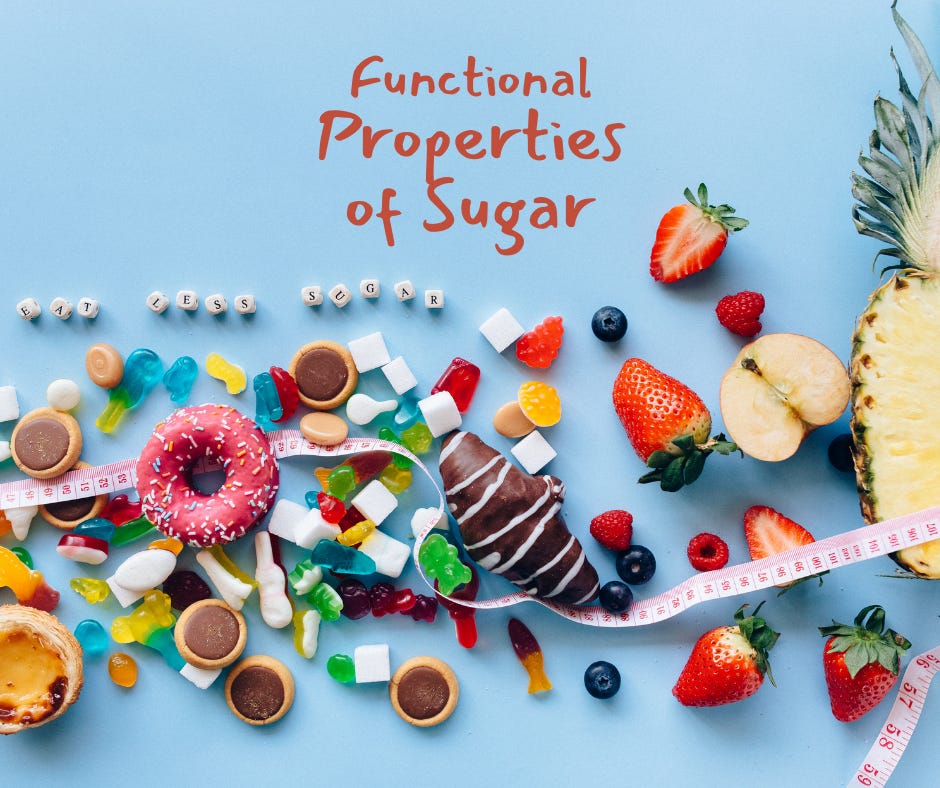When students think about sugar, the first thing that usually comes to mind is sweetness. But sugar isn’t just about taste—it plays many roles in food science, from energy production to food preservation.
Understanding how sugar works in food is a great way to introduce students to chemistry, biology, and even food safety, all in one lesson. Let’s break down the main functions of sugar in food systems so you can help your students see sugar in a whole new light.
What Is Sugar?
At its core, sugar is a natural building block of carbohydrates. We find sugars in fruits, vegetables, milk, honey, and even tree sap. Some sugars are simple, like glucose, fructose, and galactose—these are called monosaccharides. Others are more complex, like sucrose (table sugar), lactose (milk sugar), and maltose (found in malted grains)—these are disaccharides, made up of two sugar units joined together.
Sweetness and the Taste Experience
Sweetness is the first thing most students think of when they hear the word “sugar.” It’s one of the five basic tastes we experience, along with salty, sour, bitter, and umami.
You should let your students be aware that not all sugars taste equally sweet. For example, fructose is much sweeter than table sugar, while lactose is only mildly sweet. Scientists use a sweetness scale where sucrose (table sugar) is given a value of 100. Fructose scores about 173 on this scale, while lactose comes in at about 16. These differences happen because each sugar’s chemical structure interacts with our taste buds in unique ways.
Sugar Dissolves Easily in Water
Another property of sugar that’s easy to demonstrate in class is how quickly it dissolves in water. Sugar is hydrophilic, meaning it loves water. That’s why it mixes so easily into drinks or recipes.
Students can experiment with this by observing how sugar dissolves faster when you heat the water, stir it, or grind the sugar into smaller particles. This is a simple way to link food science to physical science concepts.
Sugar Provides Energy
Sugar is a carbohydrate, and like all carbohydrates, it supplies four calories of energy per gram. In the body, sugar is broken down into glucose, which fuels cells and supports everyday activities—from thinking and breathing to running or exercising.
Students should understand that sugar isn’t just about flavor—it’s also about fuel. The human body turns carbohydrates, including sugars, into energy using a process called glycolysis, which eventually leads to the production of ATP (the energy currency of the cell).
Microorganisms Love Sugar Too
Sugar isn’t just a fuel for humans—it’s also a food source for microorganisms. When yeast or bacteria consume sugars, they create fermentation products like alcohol, acids, and carbon dioxide. This process is essential in the production of bread, yogurt, beer, wine, and other fermented foods.
Fermentation adds flavor, texture, and aroma to foods, so sugar plays a key role in making quality food products.
Sugar Helps Preserve Food
One of the reasons we use sugar in jams, jellies, and syrups is because it helps preserve food. Microorganisms need water to grow, and sugar binds to water, making it unavailable for bacteria and molds. This slows down spoilage and helps keep food safe longer.
Teaching students about the role of sugar in preservation is a great way to connect food chemistry to food safety. It’s also why high-sugar foods like honey or jam tend to last longer without refrigeration.
Sugar Changes the Color of Food
When sugar is heated, it browns and changes flavor. This happens in two main ways:
Caramelization is when sugars break down under heat, forming new colors and flavors. This is what gives caramel its rich brown color and distinct taste.
The Maillard reaction happens when sugar reacts with proteins, especially at high heat. This creates the browned crust on bread, cookies, or grilled meat.
Both of these browning processes are important in cooking and food manufacturing, and they help create the flavor and appearance of many popular foods.
Wrapping It Up
Students may come into your class thinking sugar is just about sweetness, but by the time you’re done with this lesson, they’ll understand that sugar plays a much bigger role in food science. From energy production to fermentation, preservation, and even color development, sugar is involved in many processes that affect the foods we eat every day.




